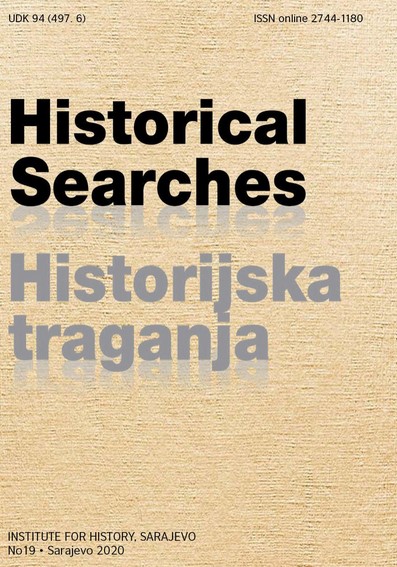ORGANIZACIJA RAVNATELJSTVA DRŽAVNIH ŽELJEZNICA SARAJEVO (1941. – 1945.)
THE STRUCTURE OF THE DIRECTORATE OF STATE RAILWAYS IN SARAJEVO (1941-1945)
Author(s): Siniša LajnertSubject(s): Governance, Government/Political systems, WW II and following years (1940 - 1949), Transport / Logistics
Published by: Institut za istoriju
Keywords: Directorate of the State Railways in Sarajevo; Croatian State Railways; structure of railways; history of institutions; 1941-1945;
Summary/Abstract: Through the specified subject matter, the paper aims to unify the history of institutions as an integral component of archival science, and the history of technology of transport as part of traffic engineering. From the aspect of the history of institutions the author analyses the structure of the Headquarters of State Railways in Sarajevo from 1941 to 1945, whereas its railway infrastructure is shown from the aspect of the history of technology of transport. There were two state railways directorates in the Independent State of Croatia (NDH); in Sarajevo and Zagreb. The structure of the NDH railways system was hierarchical, from the highest body – the competent Ministry, to lower levels, ending with the state railways directorate in Sarajevo and Zagreb. A certain amount of railway workers of the Directorate in Sarajevo supported the People’s Liberation Army’s units in their actions. Some of them were arrested and taken to concentration camps. Others supported the present regime, receiving praise, recognitions and medals in return. The difficult war circumstances of that time made the job of railway workers strenuous. The biggest problem of the NDH railways systems were attacks made by the units of the People’s Liberation Army on their infrastructure. The employees of the Sarajevo Directorate faced no lesser problem in negative behaviour shown by the Italian Royal Army. The Italian army primarily took care of its own interests and needs. Among other things, the Italians permitted and tolerated Chetniks’ disturbances, which often turned into crimes against railway staff and property. The allied bombing of the railways infrastructure also occurred during the final phase of the war.
Journal: Historijska traganja
- Issue Year: 2020
- Issue No: 19
- Page Range: 307-348
- Page Count: 42
- Language: Croatian

